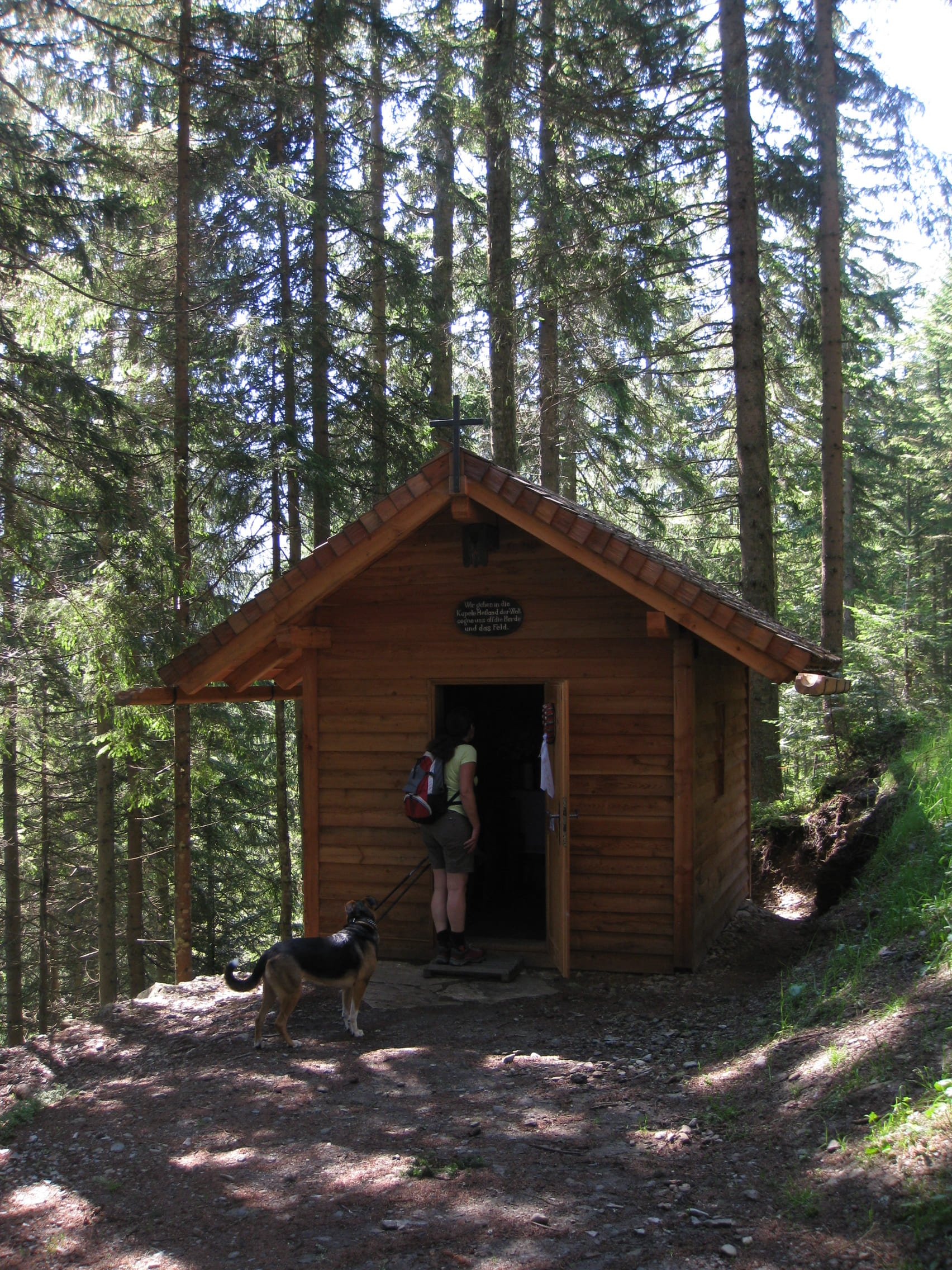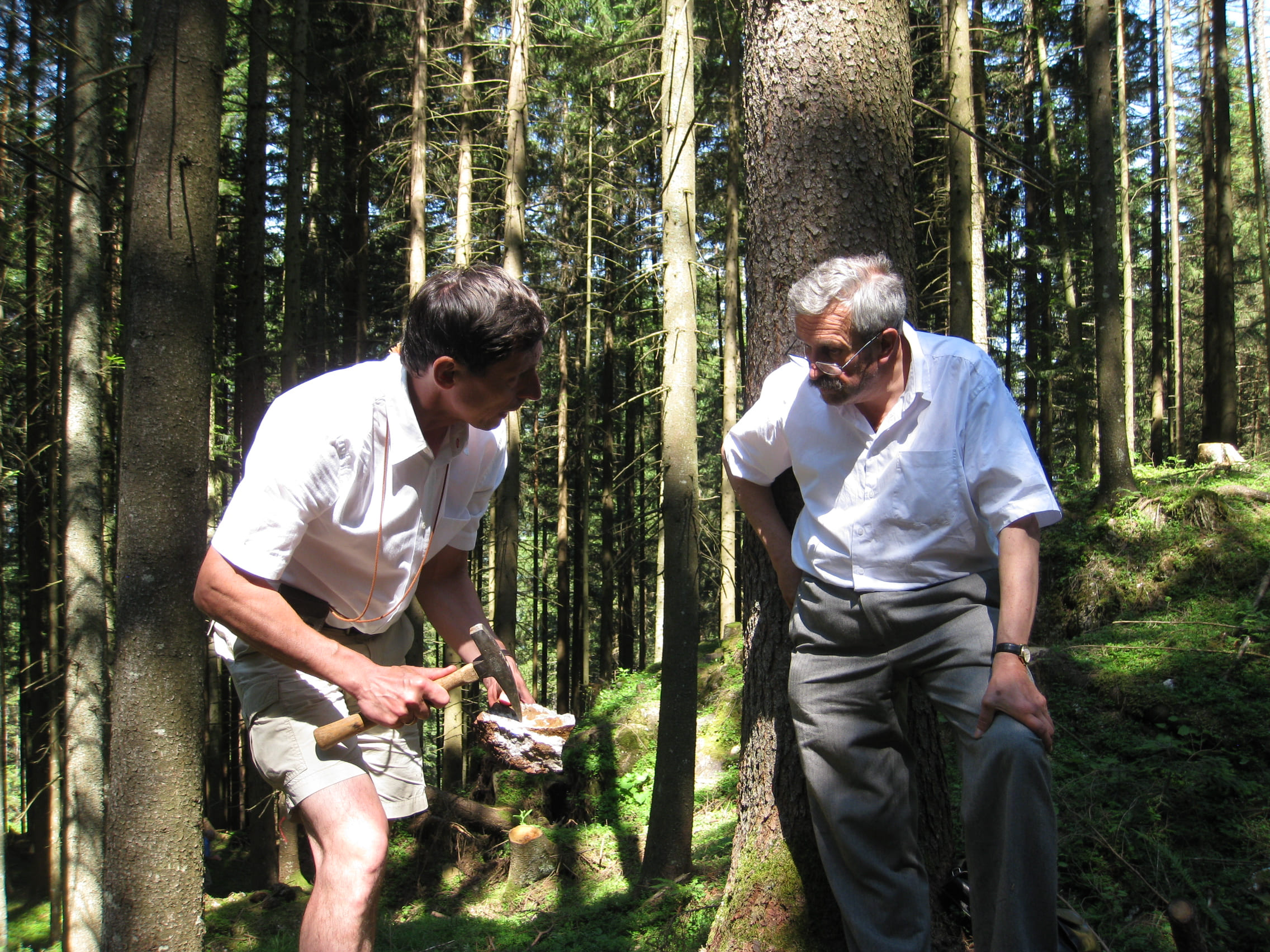Hörndlkapelle - Rupert pilgrimage
The St. Rupert Sternpilgerweg (St.
Rupert star pilgrimage trail) follows
the footsteps of the “Salt Saint” and “Apostle of Bavaria” in seven stages from Altötting through the Rupertiwinkel, via Traunstein and the old brine pipeline to Bad Reichenhall and on to Salzburg to the grave of Saint Rupert.
Branching off at Waging, a second trail leads via Oberndorf, Seekirchen, St. Wolfgang, Annaberg, Hüttau to the Hochgründeck mountain (1,827 m) and back down to Bischofshofen,
to the Maximillian cell founded by Rupert and a replica of the Rupert cross in the visitor center of the Ore of the Alps UNESCO Global Geopark.
The St. Rupert pilgrimage trail to Hochgründeck mountain leads past a sacred treasure. The Hörndl Chapel is a small mountain chapel located on Hörndlwald at 1,153 meters. This is where the Virgin Mary is said to have appeared to a farmer maid, Elisabeth Pilzegger, in 1851. As a result, a votive shrine was erected.
Instead, during the interwar period, the chapel was built, which was extensively renovated by the Bauernschützen Bischofshofen in 2010. Pilgrims come from near and far to pray to the Hörndlfrau. South of the Hörndlkapelle chapel in the Hörndlwald forest is a sinkhole that indicates mining activities from prehistoric to medieval times.
Kids
What is pilgrimage?
Pilgrimage is like a special journey that people make to visit important places that are sacred or particularly significant to them. These places can be religious sites such as churches, temples or mosques, for example.
Pilgrimage is not just about walking from one place to another, but also about the journey itself. Many people walk to have time to reflect and enjoy nature. Some also make the pilgrimage for religious reasons, to pray, meditate or learn about their faith community. It is a special tradition that people have been doing for many centuries all over the world.
What is pilgrimage?
Pilgrimage is like a special journey to places that are particularly sacred or important to people. These can be religious sites such as churches, temples or mosques, but also beautiful natural places.
Pilgrimage is not just about walking from one place to another, but also about the journey itself. Many people walk to have time to reflect and enjoy nature. Some make the pilgrimage for religious reasons, to pray or reflect. Others want to learn more about their faith community and exchange ideas with others.
It is an ancient tradition that people around the world have been doing for many centuries to experience new things and strengthen their spiritual connection.
What is pilgrimage?
Pilgrimage is a meaningful journey to sacred or important places, whether to religious sites such as churches, temples or mosques or to natural and historical places of special significance.
Pilgrimage is not just about getting from one place to another, but also about personal experience and development during the journey. Many pilgrims deliberately choose to walk in order to have time for reflection and to experience nature. Some walk for deeply religious reasons, to pray, meditate or deepen their spiritual connection. For others, pilgrimage is an opportunity to learn more about their faith community and its history and to socialise with other pilgrims.
Pilgrimage is an ancient tradition that people have been practising for centuries to gain spiritual insights, find inner peace and develop personally.


